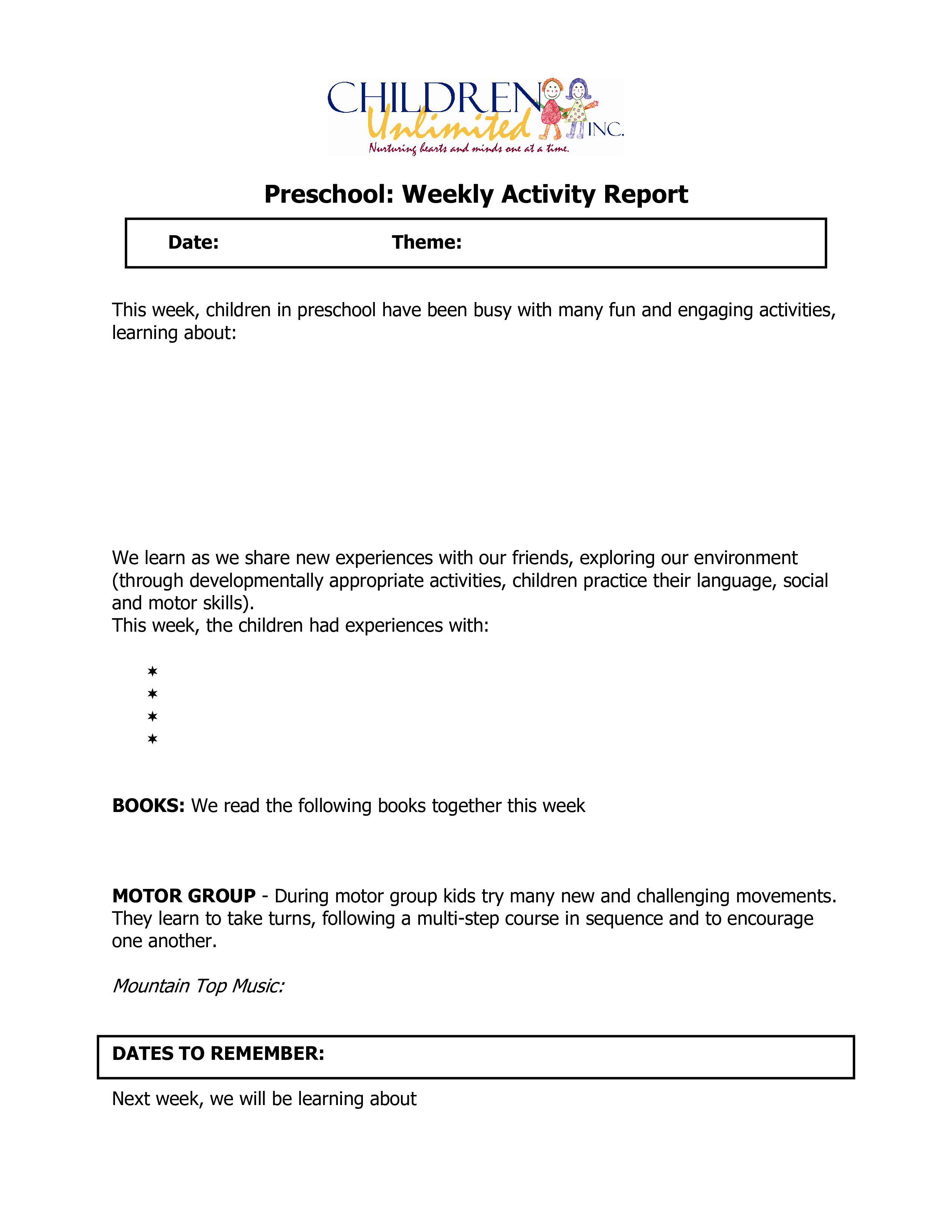Preschool Weekly Activity Schedule
Sponsored Link免费模板 保存,填空,打印,三步搞定!

Download Preschool Weekly Activity Schedule
Adobe PDF (.pdf)- 本文档已通过专业认证
- 100%可定制
- 这是一个数字下载 (132.09 kB)
- 语: English
Sponsored Link
How to make a preschool weekly activity schedule? What is the meaning of a weekly activity schedule? For your convenience, we have created a sample template for you to use. It includes all the necessary information, such as the date, time, and name of the activity. It is easy to use and customize to fit your needs. Download this sample schedule template that will perfectly suit your needs!
A Preschool Weekly Activity Schedule is a plan that outlines the activities and lessons that will take place in a preschool or childcare setting over the course of a week. This schedule is typically designed to provide young children with a structured and engaging learning environment while also allowing for free play and exploration. The specific activities and schedule can vary depending on the educational philosophy of the preschool, the age of the children, and the goals of the program.
Here are some common elements you might find in a preschool weekly activity schedule:
- Circle Time: This is often how the day begins, with activities like group discussions, songs, stories, and calendar time. Circle time helps children develop social and communication skills.
- Learning Centers: Preschools often have various learning centers that children can rotate through during the week. These centers might include art, science, math, language, and sensory play areas. The activities in each center are designed to promote specific skills and knowledge.
- Outdoor Play: Outdoor time is crucial for children's physical development and allows them to expend energy and explore the natural world. Weather permitting, preschools often schedule daily outdoor playtime.
- Storytime: Reading is an essential component of early childhood education. Storytime involves reading books to the children and discussing the stories to enhance language and comprehension skills.
- Creative Arts: Activities like painting, drawing, and craft projects help children develop fine motor skills, creativity, and self-expression.
- Music and Movement: Preschools may incorporate music and movement activities to encourage physical coordination and a sense of rhythm.
- Snack and Lunchtime: Preschools provide meals and snacks, and this time is often used for teaching table manners, social interactions, and healthy eating habits.
- Rest or Nap Time: Young children need rest during the day, so a schedule may include a designated rest or nap time.
- Free Play: Unstructured playtime allows children to choose activities and interact with their peers independently, fostering creativity and social skills.
- Special Activities or Field Trips: Some days may include special events, visitors, or field trips to enhance the learning experience.
The specific content and structure of a Preschool Weekly Activity Schedule can vary from one preschool to another and may also be tailored to the age group of the children. The goal is to create a balanced and engaging environment that promotes learning and development in various domains, including cognitive, social, emotional, and physical aspects of a child's growth. It's important for parents and caregivers to understand the schedule and be involved in their child's preschool experience.
DISCLAIMER
Nothing on this site shall be considered legal advice and no attorney-client relationship is established.
发表评论。 如果您有任何问题或意见,请随时在下面发布
相关文件
Sponsored Link

